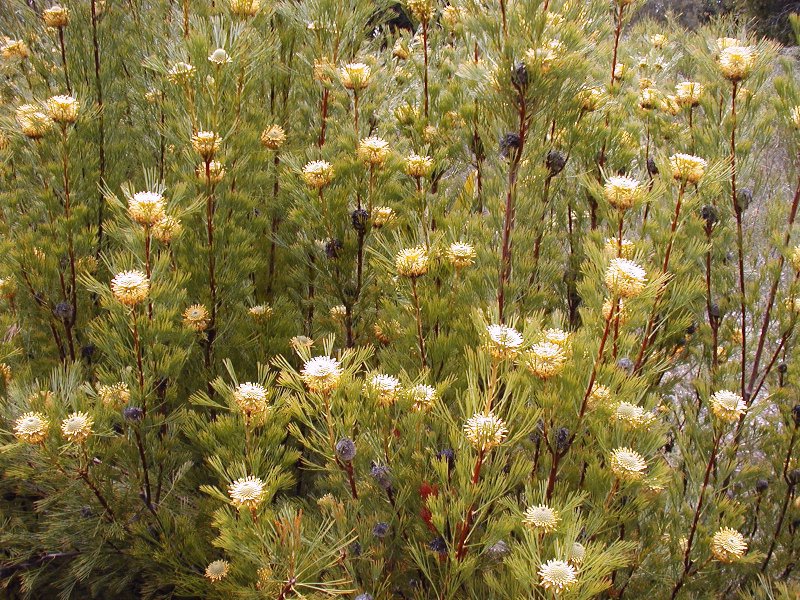|
Coneflower
{{Plant common name ...
Coneflower is a common name of several genera of flowering plants: ;In the family Asteraceae *'' Dracopis'' *''Echinacea'' *''Rudbeckia'' *'' Ratibida'' ;In the family Proteaceae * ''Isopogon'' See also *Cornflower ''Centaurea cyanus'', commonly known as cornflower or bachelor's button, is an annual flowering plant in the family Asteraceae native to Europe. In the past, it often grew as a weed in cornfields (in the broad sense of "corn", referring to gra ... [...More Info...] [...Related Items...] OR: [Wikipedia] [Google] [Baidu] |
Rudbeckia
''Rudbeckia'' () is a plant genus in the Asteraceae or composite family. Rudbeckia flowers feature a prominent, raised central disc in black, brown shades of green, and in-between tones, giving rise to their familiar common names of coneflowers and black-eyed-susans. All are native to North America, and many species are cultivated in gardens for their showy yellow or gold flower heads that bloom in mid to late summer. The species are herbaceous, mostly perennial plants (some annual or biennial) growing to 0.5–3.0 m tall, with simple or branched stems. The leaves are spirally arranged, entire to deeply lobed, and 5–25 cm long. The flowers are produced in daisy-like inflorescences, with yellow or orange florets arranged in a prominent, cone-shaped head; "cone-shaped" because the ray florets tend to point out and down (are decumbent) as the flower head opens. A large number of species have been proposed within ''Rudbeckia'', but most are now regarded as synonyms of the lim ... [...More Info...] [...Related Items...] OR: [Wikipedia] [Google] [Baidu] |
Echinacea
''Echinacea'' is a genus of herbaceous flowering plants in the daisy family. It has ten species, which are commonly called coneflowers. They are found only in eastern and central North America, where they grow in moist to dry prairies and open wooded areas. They have large, showy heads of composite flowers, blooming in summer. The generic name is derived from the Greek word ('), meaning "sea urchin", due to the spiny central disk. These flowering plants and their parts have different uses. Some species are cultivated in gardens for their showy flowers. Two of the species, '' E. tennesseensis'' and '' E. laevigata'', are listed in the United States as endangered species. '' Echinacea purpurea'' is used in traditional medicine. Although commonly sold as a dietary supplement, there is insufficient scientific evidence that ''Echinacea'' products are effective or safe for improving health or treating any disease. Description ''Echinacea'' species are herbaceous, drought ... [...More Info...] [...Related Items...] OR: [Wikipedia] [Google] [Baidu] |
Isopogon
''Isopogon'', commonly known as conesticks, conebushes or coneflowers, is a genus of about forty species of flowering plants in the family Proteaceae, and are endemic to Australia. They are shrubs with rigid leaves, bisexual flowers in a dense spike or "cone" and the fruit is a small, hairy nut. Description Plants in the genus ''Isopogon'' are erect or prostrate shrubs with rigid, usually compound, rarely simple leaves. Compound leaves are deeply divided with flat or cylindrical lobes. The flowers are usually arranged on the ends of branches, usually surrounded by bracts, in a more or less conical or spherical spike. Each flower is bisexual and symmetrical, the tepals spreading as the flower develops, the lower part persisting unit the fruit expands. The fruit are fused to form a woody cone-like to more or less spherical structure, each fruit a nut with bracts that eventually fall and release the fruit. ''Isopogon'' have 13 haploid chromosomes. Taxonomy The genus ''Isopogo ... [...More Info...] [...Related Items...] OR: [Wikipedia] [Google] [Baidu] |
Ratibida
''Ratibida'' is a genus of North American plants in the tribe Heliantheae within the family Asteraceae. Members of the genus are commonly known as prairie coneflowers or mexican-hat. Species There are 7 species: * ''Ratibida coahuilensis'' B.L.Turner - Coahuila * ''Ratibida columnifera'' (Nutt.) Wooton & Standl. – upright prairie coneflower - widespread in Canada, United States, and northeastern Mexico * '' Ratibida latipalearis'' E.L.Richards - Chihuahua * ''Ratibida mexicana'' (S.Watson) W.M.Sharp - Chihuahua, Coahuila, Sonora * '' Ratibida peduncularis'' (Torr. & A.Gray) Barnhart – naked prairie coneflower - Louisiana, Texas * ''Ratibida pinnata'' ( Vent.) Barnhart – pinnate prairie coneflower - Ontario, eastern + central United States (primarily Great Lakes + Mississippi Valley) * ''Ratibida tagetes ''Ratibida'' is a genus of North American plants in the tribe Heliantheae within the family Asteraceae. Members of the genus are commonly known as prairie coneflowe ... [...More Info...] [...Related Items...] OR: [Wikipedia] [Google] [Baidu] |
Dracopis
''Dracopis'' is a monotypic genus with ''Dracopis amplexicaulis'' (clasping coneflower; syn. ''Rudbeckia amplexicaulis'') the sole species. It is native to North America. It is an annual plant growing to 1 m tall, with simple or branched stems. The leaves are oval, long and broad. The flowers are produced in daisy-like inflorescences, with yellow to yellowish-purple florets. It is distinguished from the genus ''Rudbeckia'' (in which it used to be treated) by the presence of chaff subtending the ray flowers. It is one of at least four genera in the flowering plant family Asteraceae whose members are commonly known as coneflowers; the others being ''Echinacea'', ''Rudbeckia'' and ''Ratibida''. In cultivation in the UK this plant has gained the Royal Horticultural Society’s Award of Garden Merit The Award of Garden Merit (AGM) is a long-established annual award for plants by the British Royal Horticultural Society (RHS). It is based on assessment of the plants' performa ... [...More Info...] [...Related Items...] OR: [Wikipedia] [Google] [Baidu] |
Asteraceae
The family Asteraceae, alternatively Compositae, consists of over 32,000 known species of flowering plants in over 1,900 genera within the order Asterales. Commonly referred to as the aster, daisy, composite, or sunflower family, Compositae were first described in the year 1740. The number of species in Asteraceae is rivaled only by the Orchidaceae, and which is the larger family is unclear as the quantity of extant species in each family is unknown. Most species of Asteraceae are annual, biennial, or perennial herbaceous plants, but there are also shrubs, vines, and trees. The family has a widespread distribution, from subpolar to tropical regions in a wide variety of habitats. Most occur in hot desert and cold or hot semi-desert climates, and they are found on every continent but Antarctica. The primary common characteristic is the existence of sometimes hundreds of tiny individual florets which are held together by protective involucres in flower heads, or more t ... [...More Info...] [...Related Items...] OR: [Wikipedia] [Google] [Baidu] |
Flowering Plant
Flowering plants are plants that bear flowers and fruits, and form the clade Angiospermae (), commonly called angiosperms. They include all forbs (flowering plants without a woody stem), grasses and grass-like plants, a vast majority of broad-leaved trees, shrubs and vines, and most aquatic plants. The term "angiosperm" is derived from the Greek words ἀγγεῖον / ('container, vessel') and σπέρμα / ('seed'), meaning that the seeds are enclosed within a fruit. They are by far the most diverse group of land plants with 64 orders, 416 families, approximately 13,000 known genera and 300,000 known species. Angiosperms were formerly called Magnoliophyta (). Angiosperms are distinguished from the other seed-producing plants, the gymnosperms, by having flowers, xylem consisting of vessel elements instead of tracheids, endosperm within their seeds, and fruits that completely envelop the seeds. The ancestors of flowering plants diverged from the common ance ... [...More Info...] [...Related Items...] OR: [Wikipedia] [Google] [Baidu] |
Proteaceae
The Proteaceae form a family of flowering plants predominantly distributed in the Southern Hemisphere. The family comprises 83 genera with about 1,660 known species. Together with the Platanaceae and Nelumbonaceae, they make up the order Proteales. Well-known genera include '' Protea'', '' Banksia'', '' Embothrium'', '' Grevillea'', '' Hakea'' and '' Macadamia''. Species such as the New South Wales waratah ('' Telopea speciosissima''), king protea ('' Protea cynaroides''), and various species of ''Banksia'', ''soman'', and ''Leucadendron'' are popular cut flowers. The nuts of '' Macadamia integrifolia'' are widely grown commercially and consumed, as are those of Gevuina avellana on a smaller scale. Australia and South Africa have the greatest concentrations of diversity. Etymology The name Proteaceae was adapted by Robert Brown from the name Proteae coined in 1789 for the family by Antoine Laurent de Jussieu, based on the genus ''Protea'', which in 1767 Carl Linnaeus ... [...More Info...] [...Related Items...] OR: [Wikipedia] [Google] [Baidu] |



